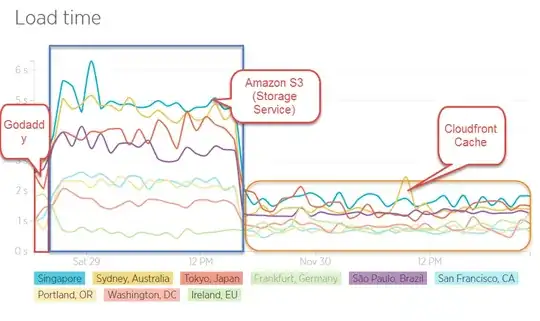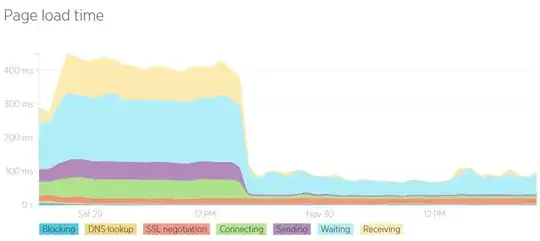I am new to CDNs and experimenting with CloudFront. I have set everything up and all appears to be working fine. I can create a static image on a page and access it though my CloudFront distribution. I am using a custom origin (i.e. not an s3 bucket).
I'm worried that I might be worse off from a performance point of view though. I have a test page that is loading up the same 20 or so images with and without the CDN. Looking at the net panel in Firebug, the first time I load this page the images that are loaded directly from the origin server come in much faster. On subsequent page loads the benefits of the CDN become obvious -- after 3-5 refreshes the CDN is doing better than the origin server.
So I can see that on a popular page on our site that is being hit all the time, this will be a benefit. And I should expect a benefit because I'm in Seattle (around the corner from Amazon) and my server is in CA.
The thing is that if I leave the page for a few minutes and then reload, things are back to square one, with CloudFront being worse than the origin server. Is this expected? Do things drop out of the CDN "cache" so quickly?
Is it possible that something in my setup is hurting performance? Or is the reality that the CDN will only be a net positive for content that is currently being accessed every few seconds on average?
(cross posted from the AWS forum because I've been spoiled forever by SO's turnaround times)
UPDATE:
There are two good answers below that are worth looking at if you have questions about CloudFront performance. I recently found one explanation for my specific problem wasn't mentioned though. I had left TTL at 5 minutes as an oversight. Since I'm also using a custom origin there is an additional round trip to the authoritative nameserver to resolve that to the actual Amazon CloudFront domain. Now that the TTL setting is back to 12 hours it seems that the long loads happen more seldom.

